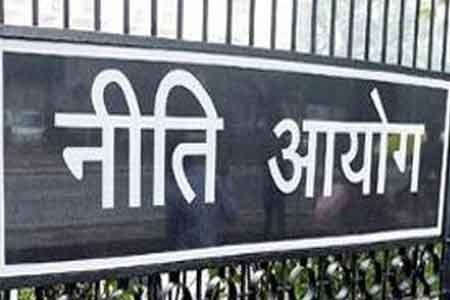New Delhi, November 6 — India’s Infrastructure Investment Trusts (InvITs) market is on track to triple in size to nearly ₹21 lakh crore ($250 billion) by 2030, driven by robust policy reforms, rising investor confidence, and a surge in infrastructure spending, according to industry estimates and government data.
With the government committing a record ₹4.5 trillion toward infrastructure projects under the National Infrastructure Pipeline (NIP), the InvITs sector has emerged as a key financial instrument in mobilizing long-term capital for roads, power, and renewable energy assets.
InvITs Emerge as the New Backbone of Infrastructure Funding
Introduced in 2014, InvITs have evolved from a niche product to a mainstream asset class attracting strong interest from both domestic and global institutional investors, including pension funds, sovereign wealth funds, and insurance companies.
According to market analysts, the total value of InvITs stood at approximately ₹7 lakh crore in 2024, led by marquee trusts like NHAI InvIT, PowerGrid InvIT, IRB InvIT, and new entrants in the renewable and telecom sectors.
If current momentum continues, analysts expect cumulative InvIT assets under management (AUM) to cross ₹21 lakh crore by 2030, a nearly threefold jump within six years.
“InvITs have become a critical bridge between infrastructure creation and long-term capital. With regulatory clarity, rising investor appetite, and steady cash flow assets, India is positioned to lead Asia’s InvIT growth story,” said Rajesh Narain Gupta, Managing Partner, SNG & Partners.
Government Policy and SEBI Reforms Driving the Boom
A series of policy reforms have catalyzed the sector’s growth. The Securities and Exchange Board of India (SEBI) has streamlined listing norms, eased leverage caps, and introduced new regulations to enhance transparency and investor protection.
Meanwhile, the Union Ministry of Finance has encouraged public sector undertakings (PSUs) to monetize mature assets via InvITs to free up capital for new projects. The National Monetization Pipeline (NMP) has identified over ₹6 lakh crore worth of assets for monetization through InvITs and Real Estate Investment Trusts (REITs).
Recent amendments also allow debt financing in InvITs, making them more flexible and attractive for large infrastructure developers. Tax incentives for long-term investors and simplified dividend distribution rules have further strengthened the appeal.
Institutional Investments on the Rise
The participation of foreign institutional investors (FIIs) and domestic mutual funds has surged in recent years. Notable global players such as CPPIB (Canada Pension Plan Investment Board), GIC (Singapore), Abu Dhabi Investment Authority, and Brookfield Asset Management have significantly expanded their exposure to Indian InvITs.
“India’s infrastructure assets offer yields between 8–12%, far higher than developed markets. With predictable cash flows, InvITs have become a preferred vehicle for institutional investors,” said Anshuman Magazine, CEO of CBRE India.
Domestic institutions like LIC, SBI Mutual Fund, and HDFC AMC have also ramped up their InvIT portfolios, creating a deeper secondary market.
Sectors Leading the Growth
While roads and power continue to dominate the InvIT landscape, new categories are emerging rapidly:
Renewable Energy InvITs: Solar and wind portfolios are being bundled under green InvIT structures, aligning with India’s net-zero targets for 2070.
Telecom and Digital Infrastructure: Tower and fiber asset InvITs are gaining traction, especially as 5G expansion fuels data consumption.
Railways and Logistics: The Ministry of Railways is evaluating an InvIT model for freight corridors and logistics parks.
These sectors combined could add ₹8–10 lakh crore in new assets by 2030.
Private Sector Momentum and Retail Entry
Apart from public sector InvITs, private players like Adani Transmission, Tata Power, and JSW Infrastructure are exploring InvIT listings to unlock value and reduce debt.
The retail participation in listed InvITs has also grown, aided by the availability of units on stock exchanges, improved liquidity, and stable dividend yields of 7–10% annually.
Challenges Ahead
Despite the strong outlook, experts warn that regulatory complexity, valuation transparency, and interest rate volatility could impact growth if not managed carefully. InvITs must ensure efficient asset management, predictable distribution policies, and robust governance to sustain investor confidence.
“As the market deepens, maintaining discipline in asset selection and financial disclosure will be critical. The focus should shift from quantity of InvITs to quality of underlying assets,” said Deepak Parekh, former Chairman, HDFC.
Outlook: ₹21 Lakh Crore by 2030
The projected ₹21 lakh crore InvIT market represents not only investor confidence but also India’s accelerating infrastructure ambition.
With the Gati Shakti program, Make in India, and energy transition projects in full swing, experts believe InvITs will become India’s preferred model for financing public assets.
“The next decade belongs to InvITs. They combine stability, transparency, and growth potential — exactly what long-term investors seek,” said a report by CRISIL.
As India races toward its $5 trillion economy goal, InvITs stand at the heart of the financial architecture powering that growth.
















